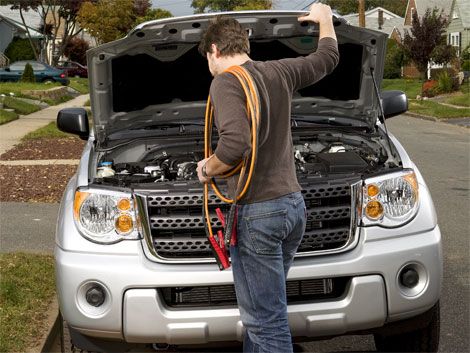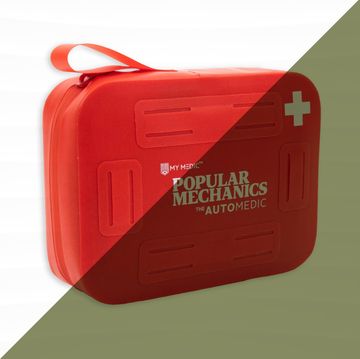Twist the key. Your car cranks for a second or two, springs to life, and then quickly settles down into a fast idle while it warms up. At least that's how it's supposed to work. This morning, no dice. It's dead, and there's no obvious reason why. Here's how to fix a car that won't start.
The best approach to finding a solution is to remain methodical. This is classic systems analysis. Just follow the decision tree on the next page, and you'll find and cure the problem. Our decision tree is generic, but it should resolve the majority of failure-to-start scenarios. The only real diagnostic tool you'll require is a decent multimeter. A fuel-pressure gauge and a noid light, for testing fuel injectors, might be handy once you've ruled out the starter motor and battery. You might also need a battery charger to bring the battery to a full state of charge, even if the engine is cranking, because you'll need a fully charged battery to do some of these diagnostics.
One point: If the battery is dead because you left the lights on, or you cranked AC/DC all night long, be sure to actually charge the battery. Don't just jumpstart your vehicle and make the poor alternator do all that charging at the same time that it's trying to supply the current to other systems. I know, I know, that may not be realistic when some kindly stranger is giving you a jump in the parking lot at midnight in a blowing snowstorm. Let's try the first few stages of the flowchart, then you're on your own.
So you turn the key and nothing happens. Nada. No lights on the dash, no noise underhood, just the sound of your own muttered cursing from the driver's seat. You've got an electrical issue, and odds are it's an open circuit at the battery posts or cables. Unless your vehicle has been in storage for years, there should be at least a little juice left in the battery, enough to dimly illuminate the instrument-panel lights.
Your first step is to check the battery posts and cables. I'd bet a good whack with your shoe might re-establish the connection and put you on the road. Tip: Leave the key on and the radio up loud. If you're poking around underhood and it starts rockin', the problem is the last wire you touched. Or, another branch of the decision tree: The dash lights come on but go off when you try to start the engine. Could be either a discharged battery or corroded cables or clamps.
So, time for step 3: Clean up the cables. Don't crank the engine for more than 15 seconds without a 60-second pause or you may overheat the starter motor. Let me say this again--follow the decision tree. There's one thing I learned working on cars many years ago. It's not uncommon to see multiple problems with intersecting symptoms. And if you try diagnosing that problem intuitively, you'll quickly make yourself crazy. Try solving problems from the top down, and you'll find each, one at a time. That's the way mechanics are taught, and that's the way that the car manufacturers expect a repair to proceed if they're going to pay for it under warranty.
Flooded
If you've discovered that you have wet spark plugs (rare on fuel-injected engines), you may not need to remove them to dry them out. Injected engines almost always have a Clear Flood mode: Depress the throttle to the floor, and then crank the engine. As long as you hold the pedal at full throttle, the computer won't inject any fuel, and a few seconds of pumping air through the engine, without fuel, will dry off the plugs.
Following this chart should get 95 percent of all cars started. If you've worked your way to the right side of the chart, and the car still hasn't started, your last recourse might be to haul out the factory service manual, some tools and a scan tool to dig deeper into your car's black box. Different fuel-injection architectures call for different diagnostics; the factory manual will have those specific to your car.













